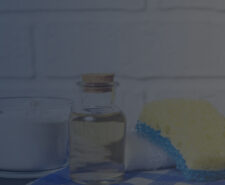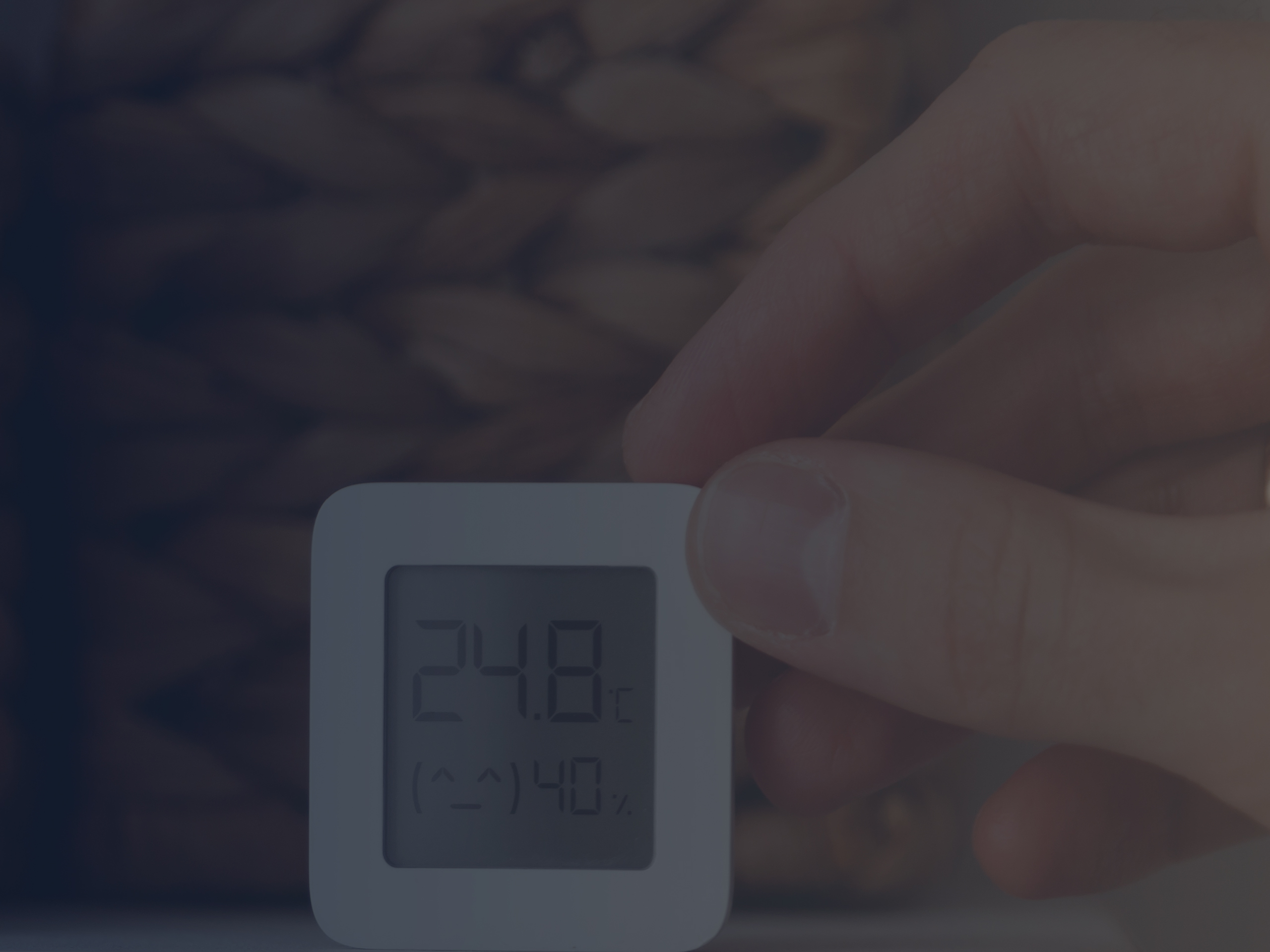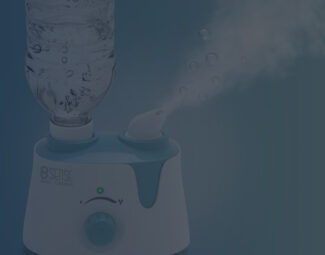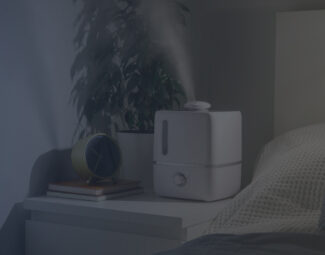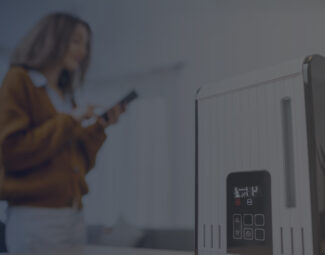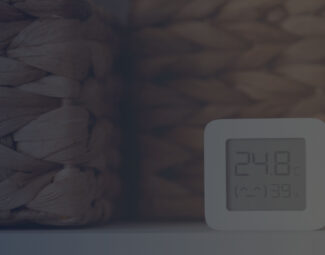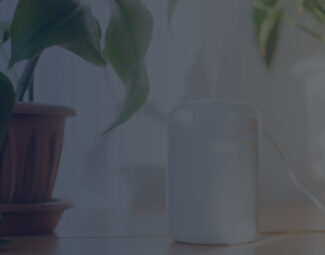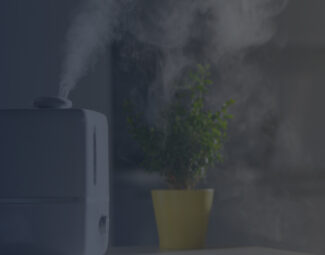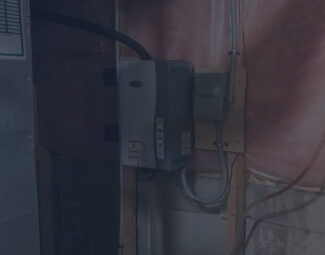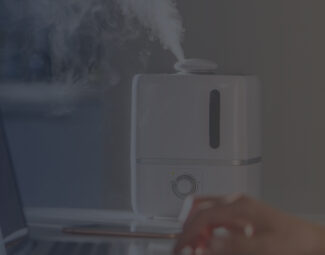A humidifier is a valuable tool that will help you get through allergy and flu season and ensure a comfortable environment all year round. It puts moisture into the air, which clings to viruses and bacteria, making them heavier and pulling them to the ground so you don’t inhale them anymore. At the same time, it keeps the tiny hairs in your nose in good shape so they can perform their role as a barrier against airborne particles. Yes, this device brings you lots of benefits, but if you don’t take proper care of it, it can easily turn into a source of contamination and release bacteria and mold spores into the air.
Just like coffee machines need maintenance, and you wouldn’t like your expresso being produced by a machine full of slime, the same goes with humidifiers. Think about it this way: the water inside the reservoir should be so clean you could drink it. You won’t, but this should be the standard.
In this article, you will find out:
- When to clean the humidifier
- The steps you need to follow
- A couple of useful tricks for good maintenance
Daily and Weekly Cleaning
If you are wondering how often you should change the water in the reservoir, the answer is every day. It may seem like a bother, and it probably is, as you will have an extra chore to perform, but it is of utmost importance to do it. Plus, it only takes two minutes, as you just need to empty the water, rinse the recipient, and dry it with a cloth or a paper towel, getting it prepared for further utilization. Only this way you can be sure that the vapors or mist that get delivered are safe. And you should pay even more attention to this task if the device is designed for a baby’s room, as infants are still to develop their lungs and can easily sense if the air is filled with impurities. If your little one is coughing a lot or struggles to breathe, check the humidifier and make sure it is clean.
Now that we have established what you need to do every day, you should also add to your schedule a weekly bath for your air moisturizer. The mold and slime deposits on the bottom can be a sign that you haven’t performed it in a long time, so don’t let it reach this stage.
Improper care for the device can lead to de development of a disease called ‘humidifier lung’, which manifests through headaches, bloody nose, coughs, and dyspnea. If the symptoms persist, you should check with your doctor.
Proper Cleaning Step by Step
You will need:
- Undiluted white vinegar
- A soft brush and a toothbrush
- Liquid chlorine bleach
- A cloth
Follow the steps for complete cleaning and sanitation:
- Step 1 - Unplug the device and remove the water recipient. Pay attention to other pieces that can be removed, like the wick filter, if it is an evaporative model, or a filter specially designed to filter the water of minerals or germs. If the filter has become rather crusty due to mineral residue or releases an unpleasant smell, then you should replace it with a new one.
- Step 2 - Fill the whole reservoir with white vinegar and pour some vinegar in another recipient as well. Here you will sink other components like the tank cap. You should let the vinegar act for about 20 minutes, then drain it into the sink.
- Step 3 - Take a soft brush (it should be clean and reserved only for this purpose) and scrub the interior of the reservoir. Insist on the parts that seem dirtier or where scale begins to deposit. Some corners may be difficult to reach. For them, make sure to reserve a toothbrush, and carefully clean them. Mold tends to gather exactly in these tight spaces. In the end, rinse.
- Step 4 - A bleach-based solution can help you sanitize the unit. So here’s how to prepare it: pour one gallon of water in the reservoir and add 1 teaspoon of liquid chlorine, then mix. Let it stay for 20 minutes. Rinse.
- Step 5 - Thoroughly dry the unit using paper towels or a soft, absorbing cloth. Then assemble it as it was and store it or fill it with water for a new humidification round.
Remember that there are many types of humidifiers and each has different components. For example, you won’t find a wick into a machine that uses electrode technology or in an ultrasonic model. So, check out the instruction manual before performing the cleaning. Some manufacturers recommend a specific routine for their devices.
Useful Maintenance Tips
- Use distilled water - Especially if you have to deal with hard water. The calcium and other minerals deposit in time on the reservoir’s walls and on the other components that come in contact with the water, creating a better environment for bacteria to grow and multiply
- Add hydrogen peroxide in the water to prevent mold growth - Just a few drops into the water will stop bacteria and mold from multiplying. This substance is not harmful to human health, so you can use it with confidence
- Keep an eye on humidity levels - If the humidity is too high, you will start feeling dehydrated and experience a higher production of mucus. This can happen either if the device is putting too much moisture into the air because you have set it on the highest level, or, if it is spreading water around, it may have to do with a malfunction. Use a hygrometer to determine RH and check the device to see if it is leaking water.
Frequently Asked Questions
1. Should I leave the filters soak in vinegar as well?
No. The vinegar will damage the filters. You should only rinse them under running water. If the wicks are crusty or have developed a smell, it is time to replace them. If you are using antibacterial filters or filters for minerals, make sure to remove them before pouring the vinegar.
2. Can I use bleach instead of vinegar for the cleaning process?
If you fill the recipient with bleach and let it act for 20 minutes, there’s the risk that it will damage the material. Vinegar is the safest solution for cleaning, as it has some disinfecting properties of his own. Bleach should be added only after you have cleaned the recipient and you should only spray a small amount on the tank’s walls. Thus, it will kill bacteria but your humidifier will remain in good shape.
3. Can you get sick from a dirty humidifier?
In most cases, if the water in the recipient is dirty, the air will be dirty and you may inhale bacteria and mold spores. Keeping the device clear is essential, otherwise, you may aggravate your allergies or asthma and become more prone to developing respiratory infections. Sensitive people and children are more exposed.
4. Can any parts go in the dishwasher?
Some models can have dishwasher components, but it is safer to check the owner’s manual, as each unit has its particularities.
5. Should I run the unit with the vinegar inside?
No. The device must be unplugged and disassembled when you begin the cleaning process. If you let it run with vinegar or a cleaning substance inside, the risk of damaging the unit is increased. Furthermore, if you set it running, the vinegar or the bleach will be spread into the air and contaminate it.
Bottom Line
When it comes to ensuring and preserving health, no effort should be spared. Two minutes to rinse every day and 20 to 40 minutes once a week can make the difference between a happy family and a sick family. All humidifiers need maintenance, even steam models, which boil the water before turning it into vapors, as they encounter problems with mineral deposits. So, take your time and read the instructions provided by the manufacturer. Then check again the steps from above and establish your own cleaning routine, according to the type of device you own.

